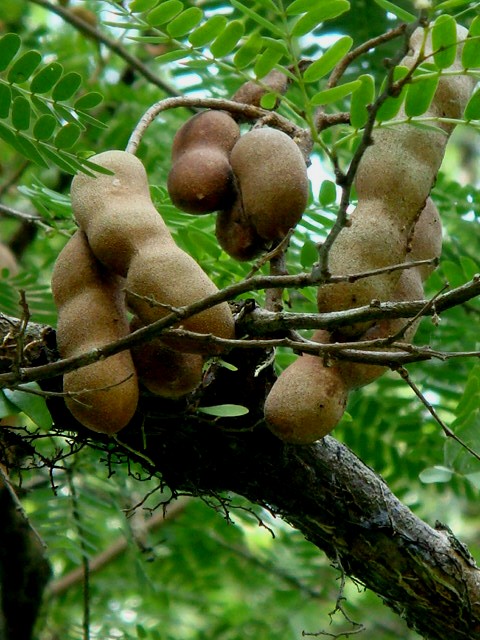Tamarindus indica, also called Tamarind, is a long-lived, evergreen fruiting tree native to regions of India and Africa, now cultivated in tropical and subtropical areas. The genus Tamarindus is monotypic, which means that it contains only one species. The timber is popularly used for making furniture and sculptures.
The tree grows upto 60 feet in height, 5 feet in diameter, and has a dense, irregular foliage of bright green leaves and elongated red-yellow flowers. The leaves are about 10 inches long with 10-18 pairs of 1 inch oblong leaflets. Tamarind trees are sensitive to frost but thrive in tropical areas with moderate rainfall where sunshine is abundant. It can grow in a variety of soils, preferably slightly acidic loam or alluvial ground. Tamarind drops its leaves in pronounced dry seasons and in climates without a dry season it stays evergreen. The flowers are about 1 in across, pale yellow with purple or red veins. They have five unequal lobes and are borne in small drooping clusters.

It bears fruit between the months of March and June. The pod is long, juicy fruit with a tangy pulp surrounded by a hard, brown shell. The velvety cinnamon brown pods are 2-6 inches long, sausage shaped and constricted between the seeds. The pulp that surrounds the 8-10 seeds is both sweet and extremely sour. Tamarind is used in making many dishes for its sour taste, widely found in Indian and Mexican staples. Parts of this tree have been an integral part of native Indian medicine, considered an effective remedy for health conditions ranging from mild fever to Infertility and diabetes. They are a rich source of antioxidants, with anti-inflammatory and anticancer properties.
Know me scientifically
Tamarindus indica is its botanical name and it belongs to the Caesalpiniaceae family. In Tamil it is called puli (புளி).








